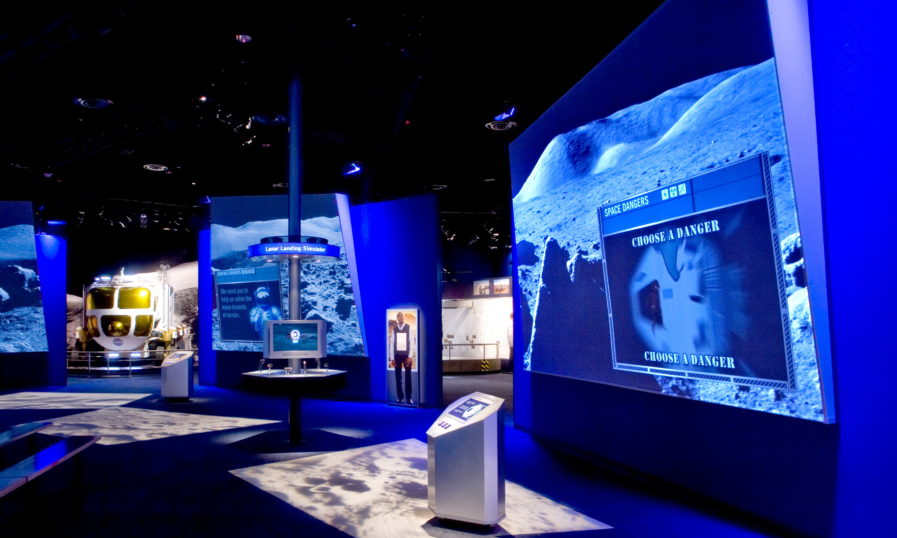
Realizing the Roller Coaster Wow in the Business Environment
The digital economy has undeniably put a new emphasis on the importance of the customer experience. As such, expectations have never been higher. But at the same time, the ability to dazzle has never been so attainable.
Simply put, there is an exciting opportunity for businesses willing to embrace the necessary steps to revolutionize the customer interaction and tell their stories in far more compelling ways. The process is known as experiential marketing.
Being able to leverage an array of technologies can facilitate success and add to the experience. Technology is only one of four essential elements necessary to successfully deliver the “roller coaster wow.” Real success requires a solid understanding of the experience desired, the story that organizations hope to convey and the space available to serve as the canvas. The ultimate goal is to blend technology to become seamless in the interaction between people, space, and content.
Let’s take a look at the critical steps for experiential marketing success:
Making a meaningful first impression
Great impressions are crucial in every environment. When organizations make a meaningful first impression, it creates an opportunity to capture and keep a customer’s attention. It starts by creating an environment that sets expectations and builds excitement.
Many types of spaces (i.e. parking garages, briefing centers, training rooms, hallways, elevators, or cafeterias) can serve as a canvas. For many businesses, the lobby serves as the first point of engagement. Fortunately, an array of opportunities exists within the lobby to begin the journey, including projection mapping, the use of LED wall displays or even digital sculptures that interactively portray the brand.
By issuing RFID badges to guests, organizations have the opportunity to customize the visit while seamlessly enabling entrance into various areas of a campus. Properly utilized and integrated, RFID badges can also serve as a means of interacting with a person’s physical and social presence. For instance, as a guest enters various areas of the campus, RFID empowers the organization to welcome the guest in their native language.
Capitalizing on immersion opportunities
Immersion is the opportunity to live up to expectations by submerging the guest into the company story. Companies can accomplish this by creating multifunctional areas capable of changing based on the needs of the target audience – whether it’s an employee, customer, or a strategic business partner. Sound and imagery are vital parts of getting immersion correct.
Consider, for instance, utilizing a multifunctional space where the walls can serve as a canvas for projection maps. When also using RFID badging, it’s possible to customize the message to appeal to the guest continually.
Fostering new levels of interaction
The more involved the guest is in the experience, the higher the likelihood of buy-in and continued engagement. The idea of gamifying the interaction always helps with storytelling. The most successful interactions center around creating a journey that invites the customer to touch and play.
Enhancing the storytelling process
The ultimate goal of any experiential marketing is to convey the organizational message in a way that truly resonates with the audience. Storytelling is an opportunity to share company history, values, and experiences. Buy-in and understanding of the value proposition improve dramatically when customers are encouraged to interact and play an active role in the story. Naturally, success hinges on having great content that engages and keeps the guest as an active participant in the journey.
One way to accomplish this goal is to develop content that effectively positions the guest as the hero and the host as the guide. With the right mix of immersion and interactivity, organizations can create a conflict that centers around the customer’s most pressing needs. In this scenario, call to action (climax) centers on the organization’s ability to address the customer’s need while adding value, with the closing focusing on the customer making a choice.
Within a manufacturing setting, the story may center around the guest’s pain points such as quality inconsistencies, price fluctuations, or engineering obstacles. Taking this step makes the story relatable and encourages the guest to engage further. This process creates an opportunity to interactively demonstrate how your organization can play a pivotal role in overcoming those obstacles.
The creative use of sounds and lighting are great tools to enhance the storytelling journey effectively. When businesses capitalize on every opportunity to engage, it helps not only create but ultimately exceed expectations.
Bottom line: Having a well-defined business purpose, whether its cost savings, productivity, or education, helps guide the story development process. And, although technology makes the immersive experience possible, it’s only effective when it remains seamless.
An exciting opportunity exists for businesses willing to embrace the necessary steps to revolutionize the customer interaction and ultimately tell their stories in far more compelling ways.
Successfully achieving the roller coaster wow starts with making a meaningful first impression that immediately immerses the guest into the story through opportunities to interactively engage with the brand.
Victoria Cosgrave
Victoria Cosgrave, Field Marketing Manager, Enterprise at Electrosonic, has wide-ranging experience of technology within professional services, financial services, infrastructure, transport, pharmaceuticals and government. Her knowledge and experience enables her to write about the technological landscape and the issues facing clients with great insight.










.jpg?width=1500&height=995&name=ELC501_N17_medium%20(1).jpg)








































































































































































































